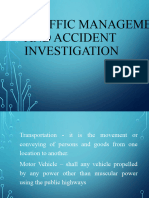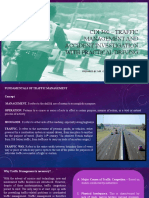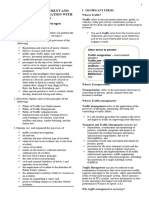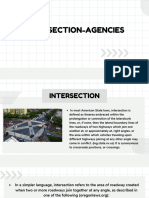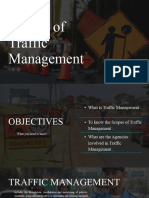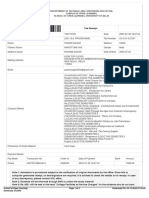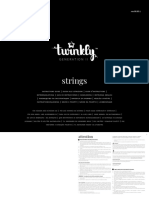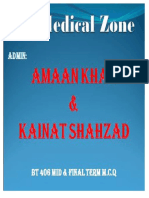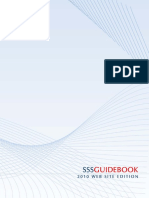0% found this document useful (0 votes)
32 views76 pagesTraffic Mgt. Module 2
Module III focuses on traffic management fundamentals, defining traffic as the movement of persons, vehicles, and goods. It emphasizes the importance of efficient traffic management to alleviate congestion and improve safety through coordinated efforts among various agencies. Key elements include traffic engineering, education, enforcement, ecology, and economy, each playing a critical role in addressing traffic-related issues.
Uploaded by
altheabaldomar30Copyright
© © All Rights Reserved
We take content rights seriously. If you suspect this is your content, claim it here.
Available Formats
Download as PPTX, PDF, TXT or read online on Scribd
0% found this document useful (0 votes)
32 views76 pagesTraffic Mgt. Module 2
Module III focuses on traffic management fundamentals, defining traffic as the movement of persons, vehicles, and goods. It emphasizes the importance of efficient traffic management to alleviate congestion and improve safety through coordinated efforts among various agencies. Key elements include traffic engineering, education, enforcement, ecology, and economy, each playing a critical role in addressing traffic-related issues.
Uploaded by
altheabaldomar30Copyright
© © All Rights Reserved
We take content rights seriously. If you suspect this is your content, claim it here.
Available Formats
Download as PPTX, PDF, TXT or read online on Scribd
/ 76










